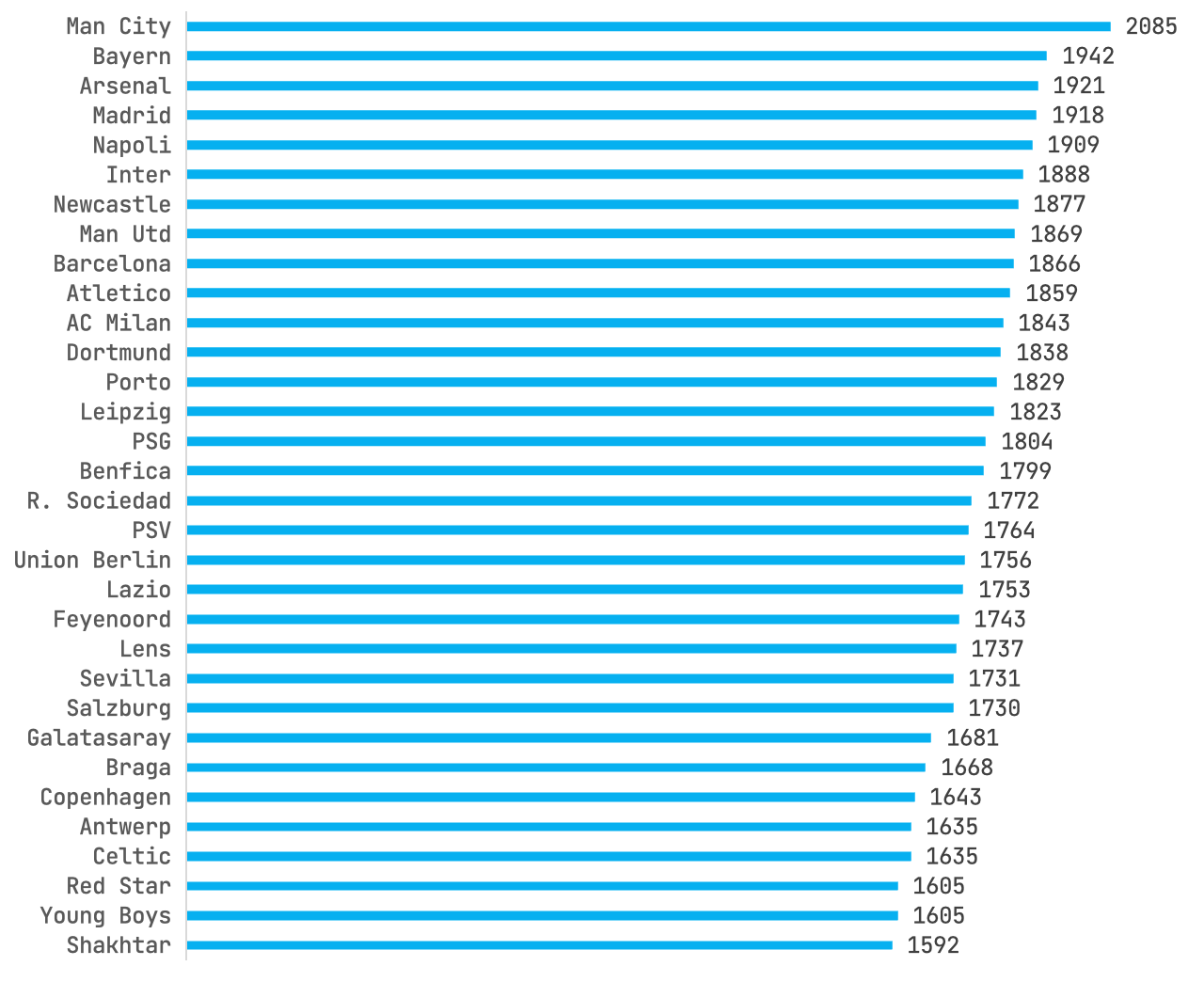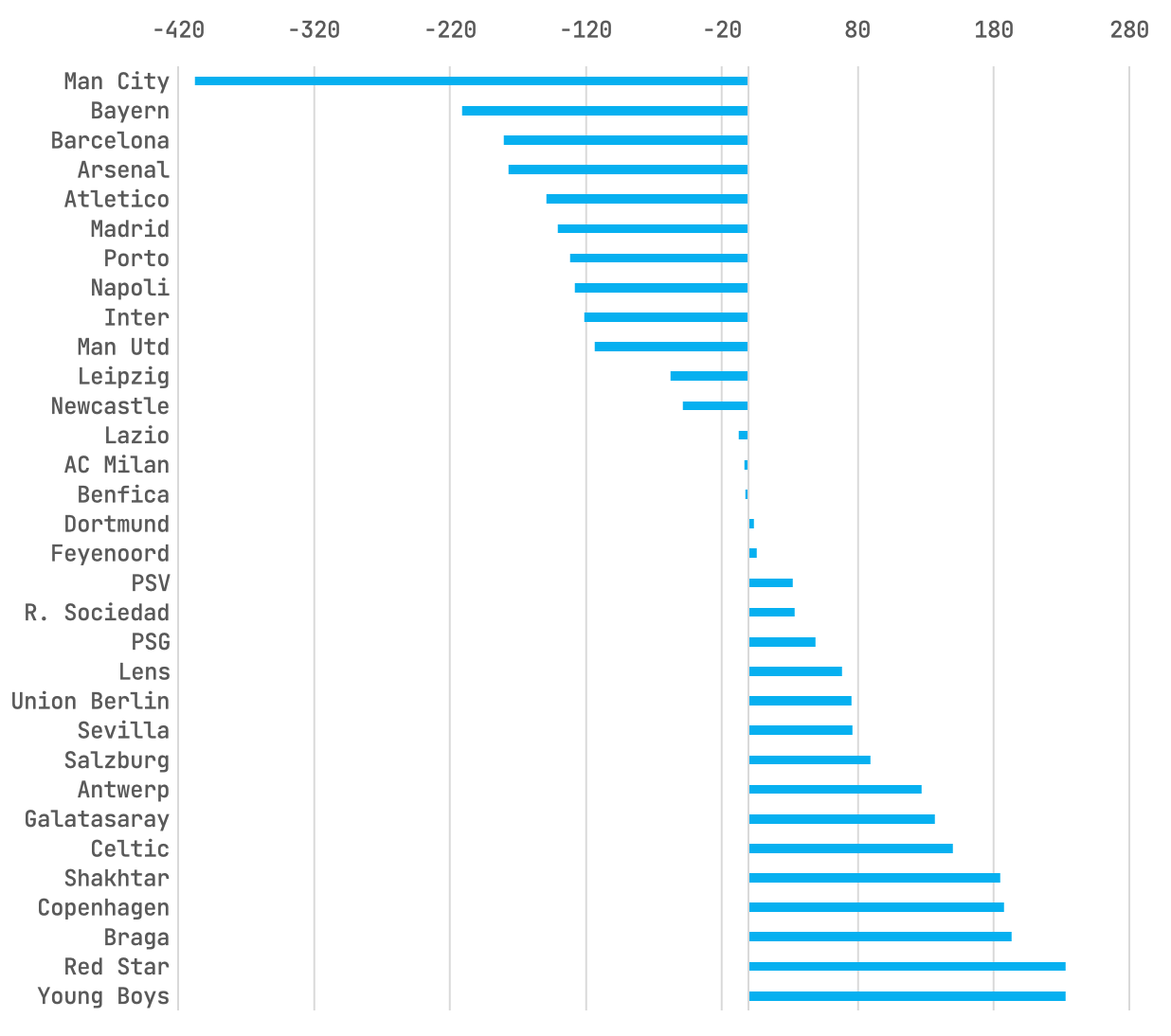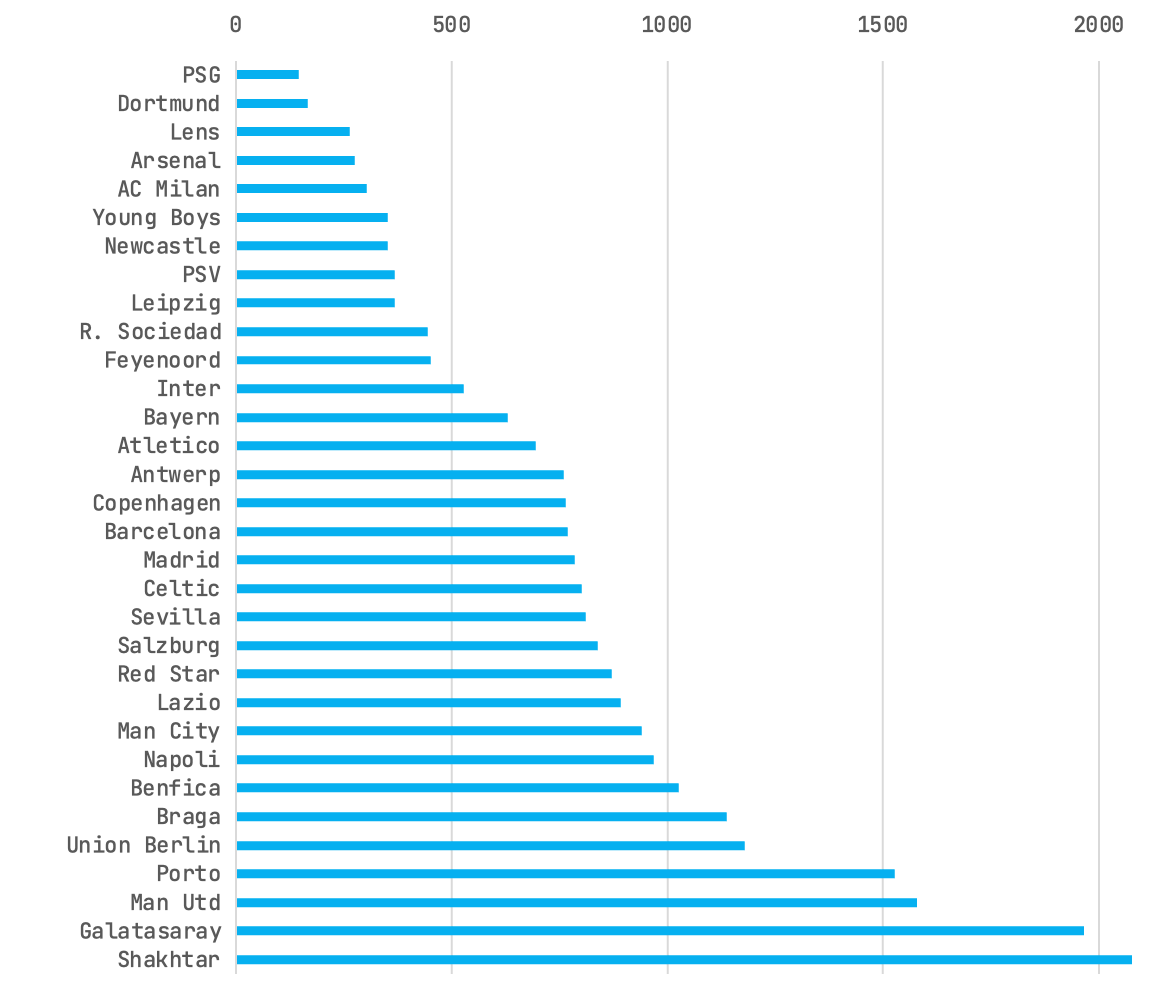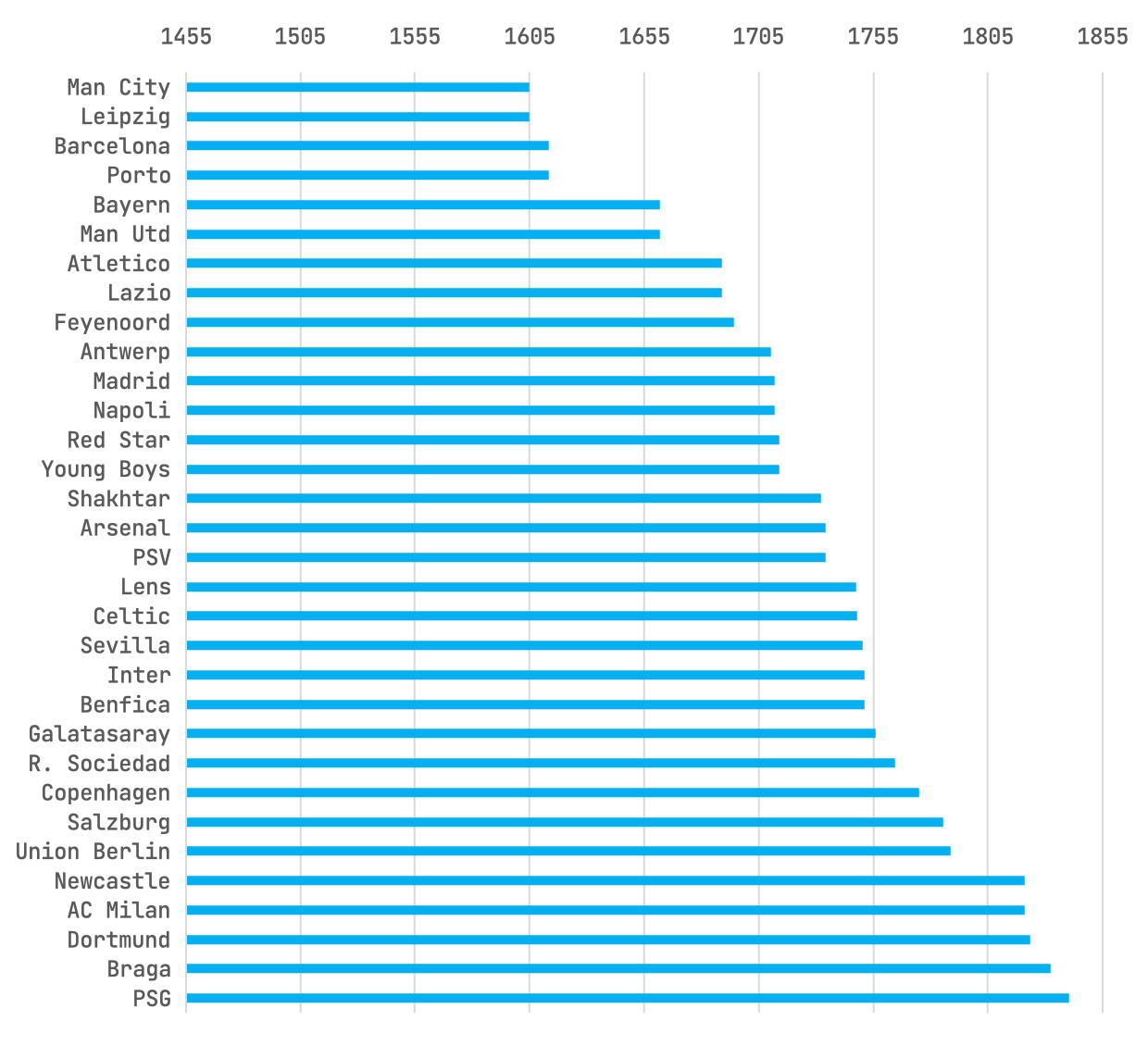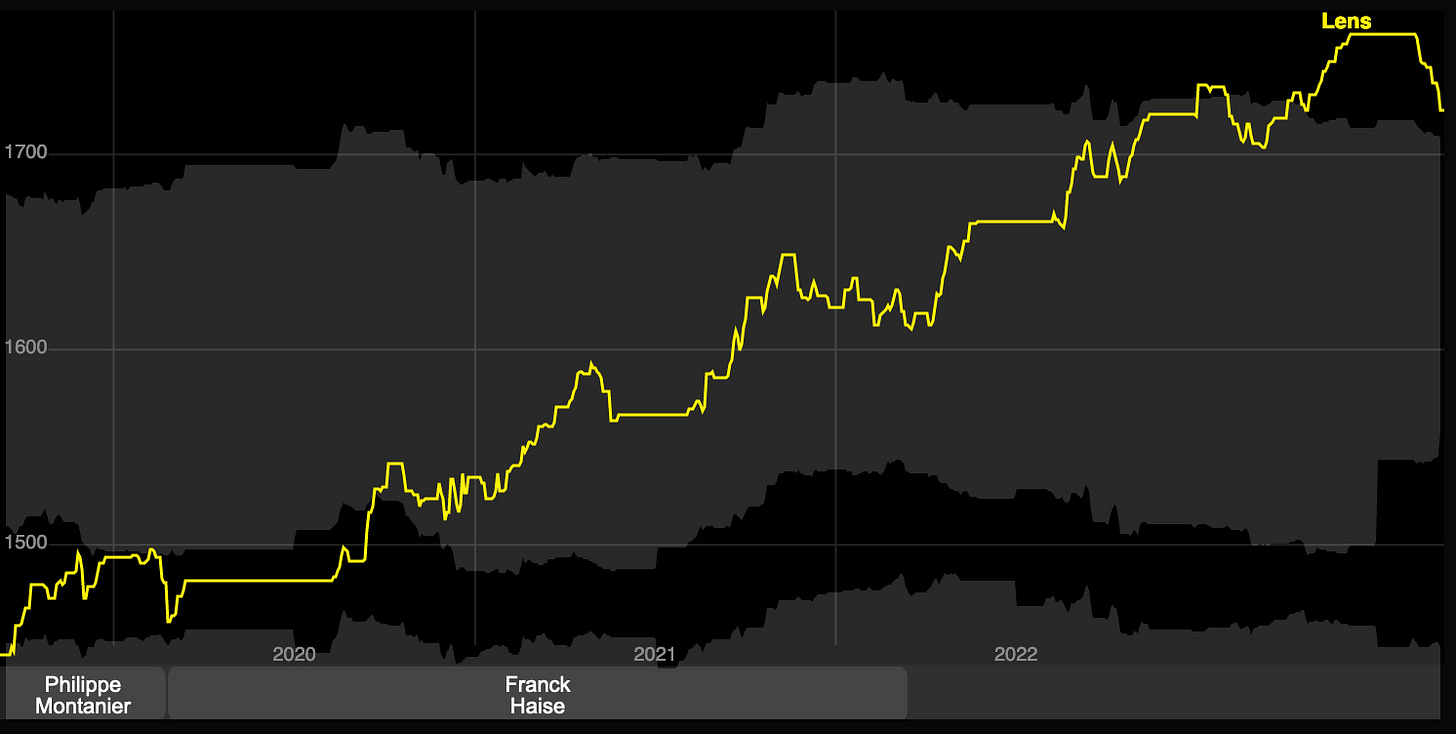The Elo system and the CL group stage draw
How did Arsenal get on?
I wanted to do a quick analysis of the Champions League group stage and compare who got the easier and tougher draw. It probably wasn’t worth a write up, but if you’re as excited as I am about Arsenal’s return to the champions league maybe you want as much content on the subject as you can get. Here is some music to accompany your reading.
To compare the strengths of different teams I’ve used clubelo.com, an incredible resource from Lars Schiefler, which is a modified version of the Elo ranking system applied to football. The Elo scores in this article are from the date of the champions league group stage draw, when I first wrote them down, other than the final section which uses current Elo scores resulting from one additional fixture.
How the Elo system works
The Elo rating system is the eponymous creation of Arpad Elo, a Hungarian-American physics professor, and was devised as a method of ranking chess players and predicting the outcome of games. It’s the most widely used ranking system in chess and has been adapted for use in other sports, including football.
The basic principle is that the outcome of a match causes a transfer of points from one team to the other. The winner takes points from the loser, or, in the case of a draw, the team with the stronger Elo loses points and the team with the weaker Elo gains points. The size of the points transfer depends on the relative strength of each team. Man City beating Luton results in a small points transfer. Luton beating Man City results in a larger points transfer.
In addition to the match outcome clubelo.com also factors in the margin of victory, the expected outcome (xG) and whether the match was home or away, to give greater context to a result, and because unlike chess, the home advantage really does exist.
The more matches played between players the more accurate the ratings are. The data on clubelo.com goes back as far as 1933 and contains ~655500 matches. This allows us to place current Elo ratings in a historical context and to satisfyingly chart the progress of a team over a long period of time.
An example points transfer
The Elo system predicted that Arsenal were more likely to win last weekend. The outcome of the match caused Arsenal’s Elo to rise and Manchester United’s to fall by 7.8 points.
The Elo ratings of the group stage teams
It’s no surprise City are top. Perhaps more surprising is to see Arsenal third. This is due to the relative strength of the Premier League which has nine teams in the top twenty, whereas Germany, Spain and Italy have three each. France has only one, PSG, who are ranked 20th.
Being the dominant team in an otherwise poor league doesn’t produce a strong Elo, especially if you are knocked out of Europe early most years. This explains why Newcastle are ranked above PSG, Dortmund and Milan, despite being in pot four of the draw.
Liverpool, who aren’t even in the competition, are ranked second in Europe, despite their recent decline, which is a legacy of their sustained dominance up until last season.
The average Elo of each European league
Again it’s no surprise to see the Premier League top. It’s interesting to see the Championship also feature highly, alongside the Eridivisie and above the Portugese and Belgian leagues. We’ve seen many players struggle to adapt from these leagues, such as Lokonga and Fabio Vieira.
The Ukrainian league’s Elo has suffered a lot since the war which makes sense given the huge exodus of players. This correlates with Mudryk’s breakout season and perhaps goes someway to explaining his struggle to adapt.
The average Elo of each team’s group stage opponents
Not only are City the strongest team but they also have the easiest group. Arsenal by comparison have the 6th easiest with an Elo +66.3 higher. Man Utd have the 9th easiest with an Elo +77.7 higher. Newcastle have by far the hardest of the premier league teams being 24th on the list with an Elo +150.7 higher.
Each team’s Elo minus the average of their group opponents
Ridiculous stuff for Manchester City. We can see how tight Newcastle’s group is, with all four teams appearing in the centre of the graph with barely any variation between them. The bookmakers have PSG finishing top, Newcastle second, Milan third and Dortmund last, which intuitively feels more likely than what the Elo system is predicting. I’m curious to find out who is right.
Distance to travel
The distances are as the crow flies between the stadium of each team and the stadiums of their group opponents. The coordinates for each stadium have been taken from this very helpful wikidata query so I think the distances are in kilometres. Shakhtar’s temporary home in Lviv has been used rather than Donetsk. Arsenal are again ranked nicely in 4th place. Manchester United are ranked 29th and have to travel almost six times as far.
Average Elo of a team’s worst two opponents
Given that two teams qualify perhaps it’s more useful to look at a team’s two weakest opponents. Arsenal drop from 6th to 16th. Manchester United rise from 9th to joint 5th. I’m not sure what the better situation is, to have two very weak teams and one strong team, or three weaker yet still reasonably strong teams.
Some other Elo observations
Arsenal’s 2007-08 team ranks as the 26th all time best team in Europe and have Arsenal’s best ever Elo score of 1965. It was a strong season, both in Europe and domestically, finishing just four points from the top, below very strong Chelsea and Manchester United sides whose teams from that season rank 10th and 11th in the all time list. Many Arsenal fans consider this season as one of Wenger’s greatest, despite the lack of trophies. It’s worth noting that the score reflects the peak Elo we achieved that season, which is before the dramatic and unexpected collapse in form near the end.
The double and invincible seasons of 1997-98, 2001-02 and 2003-04 don’t feature on the list at all. I think this is in part due to the way this particular Elo system values long term trends instead of allowing for greater short term fluctuations. Wenger’s early success was rapid and it followed on from a real low point - literally in Elo terms - near the end of George Graham’s time at the club.
Arsenal from last season are ranked 40th in the all time list with a peak Elo of 1949. We’re currently ranked 1929 which is 36 Elo points from surpassing our best, which we could potentially achieve this season, especially if we go far in Europe. It would seem fitting because trophies aside this is one the best versions of Arsenal that I’ve seen.
Our group opponents
We lost to PSV in the Euopa League last season and they’re not in bad form having won all three of their league games this season. However, since we played them they’ve lost three of their best players: Xavi Simons, Cody Gakpo and Ibrahim Sangaré. They are nominally our strongest opponents with a current Elo of 1776.
Sevilla have lost all the games they’ve played this season, but unlike Lens, they’ve only played three nominally weaker teams. They destroyed Manchester United last season in the Europa League and won the competition, but otherwise they appear to be in a bad place. They have an Elo rating of 1730.
Lens have lost three out of four games they’ve played this season and drawn the other. They’ve sold their star striker Loïs Openda and midfielder Seko Fofana. It’s worth noting that they’ve faced three strongs teams in PSG, Monaco and Rennes. They have a current Elo of 1723.
Conclusions
We have a good group and it’s exciting to be back!



